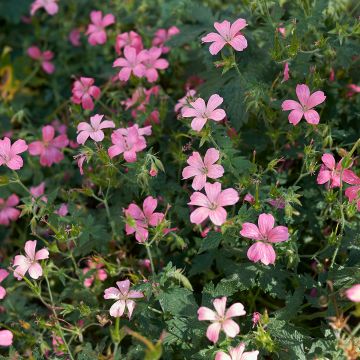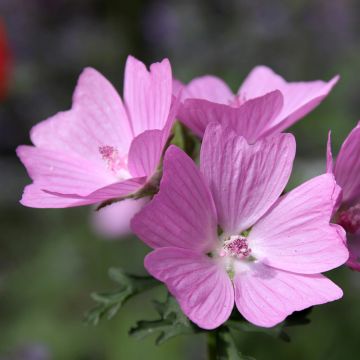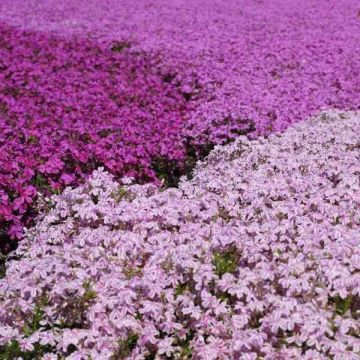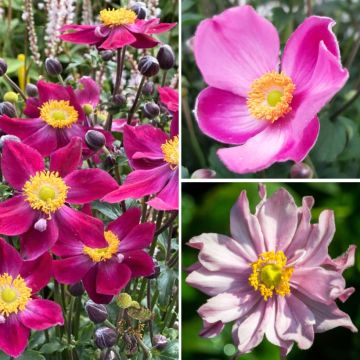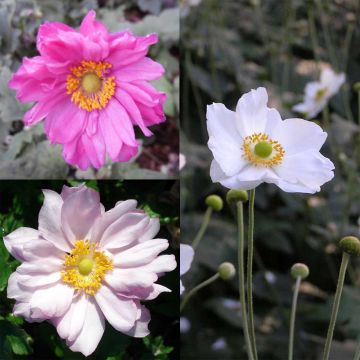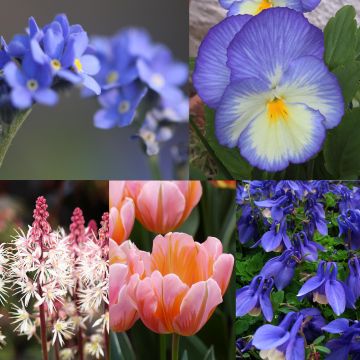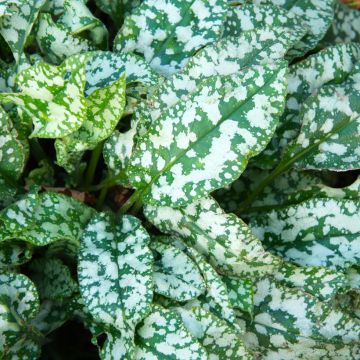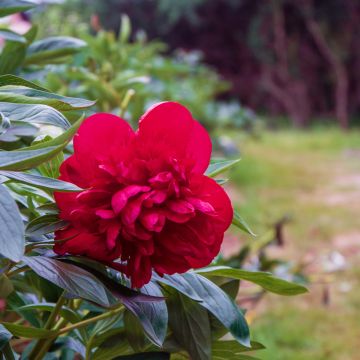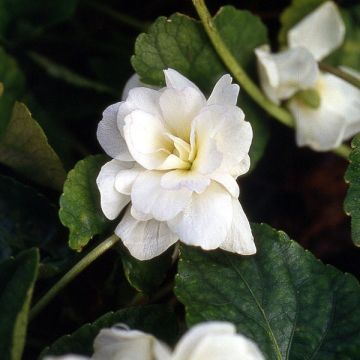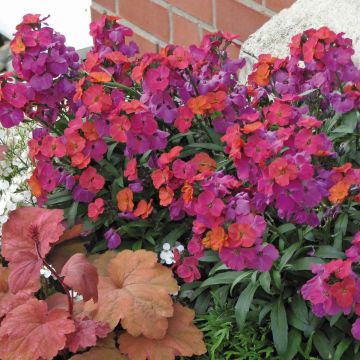Shipping country and language
Your country of residence may be:
Your country of residence is:
For a better user experience on our website, you can select:
Your shipping country:
Andorra
Austria
Belgium
Bulgaria
Canada
Chile
Croatia
Cyprus
Czechia
Denmark
Estonia
Finland
France
Germany
Greece
Hungary
Iceland
Ireland
Italy
Latvia
Lithuania
Luxembourg
Malta
Monaco
Netherlands
Poland
Portugal
Romania
Slovakia
Slovenia
Spain
Sweden
Switzerland
United Kingdom
We only deliver seed and bulb products to your country. If you add other products to your basket, they cannot be shipped.
Language:
French
German
Spanish
English
My Account
Hello
My wish lists
Plantfit
Log in / Register
Existing customer?
New customer?
Create an account to track your orders, access our customer service and, if you wish, make the most of our upcoming offers.
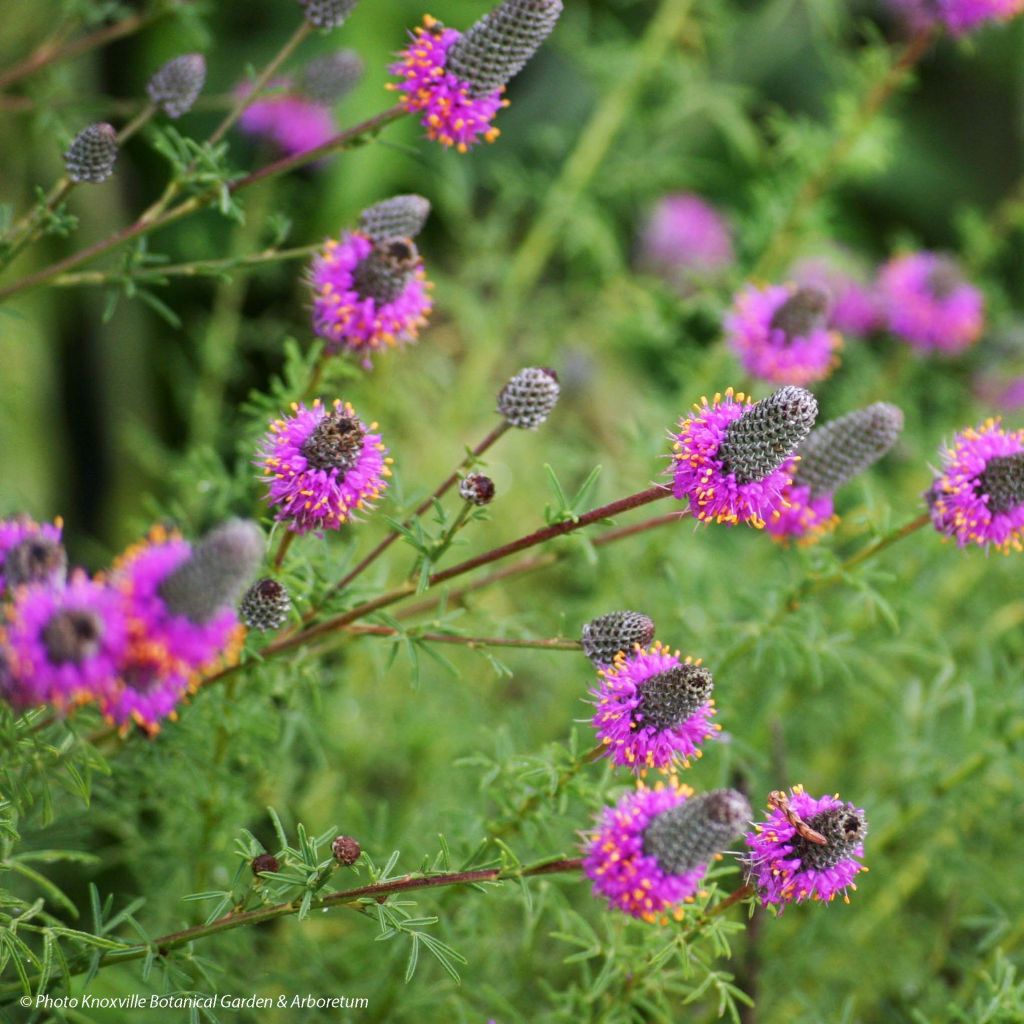

Dalea purpurea Stephanie


Dalea purpurea Stephanie
Dalea purpurea Stephanie
Dalea purpurea Stephanie
Purple Prairie Clover
The relatively mild frost (-5°C (23°F), thaw during the day) has blackened the buds. So far, the roots have not produced any new ones.
Julien B., 12/04/2018
Why not try an alternative variety in stock?
View all →Order in the next for dispatch today!
Dispatch by letter from €3.90.
Delivery charge from €5.90 Oversize package delivery charge from €6.90.
More information
This item is not available in your country.
Schedule delivery date,
and select date in basket
This plant carries a 12 months recovery warranty
More information
We guarantee the quality of our plants for a full growing cycle, and will replace at our expense any plant that fails to recover under normal climatic and planting conditions.
From €5.90 for pickup delivery and €6.90 for home delivery
Express home delivery from €8.90.
Does this plant fit my garden?
Set up your Plantfit profile →
Description
Dalea purpurea 'Stephanie', also known as Petalostemon purpureus, is a beautiful improvement of a wild perennial plant native to the great plains of the United States. Little known, this cousin of alfalfa forms a vigorous bushy clump, endowed with remarkable adaptability and a very pretty summer flowering in pink-purple, very melliferous and reminiscent of the spikes of certain lavenders. With a deep root system, very hardy, it enriches the soil that welcomes it and adapts equally well to temporarily waterlogged or dry situations in summer. Its main enemy is shade.
Dalea purpurea 'Stephanie' is a more compact, denser and more floriferous selection of a botanical species belonging to the Fabaceae family, also known as Kuhnistera violacea. In nature, it is found spontaneously in a large part of North America (except for the West Coast of the U.S.A), growing in various very sunny environments, from the floodplains of rivers to the sandy hills of Nebraska, passing through the large prairies and forest clearings, among the tall grasses, without fuss, perfectly enduring the cold and dry summers.
The 'Stephanie' variety, recently introduced to the market, forms a semi-woody and branched bushy clump, with a rather spreading habit, reaching a minimum height of 40cm (16in) and a diameter of 50cm (20in). The flowering takes place from June to August, in the form of numerous and curious conical spikes covered with tiny nectar-rich flowers. The colour, a bright pink-purple, is enhanced by golden stamens. The flowers generally open from the bottom to the top of the spike. The foliage, which disappears in winter, is composed of small, thick leaves, divided into three to 7 very narrow leaflets, 3-4cm (1-2in) long. This plant develops from a particular root system, which dives very deeply (up to 2m (7ft)) into the soil to draw and transform nutrients thanks to the presence of symbiotic bacteria housed in small nodules. Like all Fabaceae, this Dalea contributes to enriching the soil that welcomes it.
Dalea is closely related to Baptisia, sainfoin and lupins, plants considered as green manure and soil fixers, even in degraded conditions. They are not demanding in terms of soil and moisture, but they are completely intolerant to shade. Dalea purpurea 'Stephanie' will find its place in a romantic garden, a dry garden, or on the edge of a pond, in natural and rural flowerbeds. It is also useful for decorating a degraded plot of land, which often surrounds a recently built house. It looks stunning in the company of landscape roses, blue or white lavenders, Baptisias, or Allium bulgaricum. It also pairs perfectly with Amorpha canescens, Symphyotrichum sericeum (silky aster), or large American grasses such as Schizachyrium scoparium, Andropogon gerardi, and Panicum virgatum, all equally spectacular and easy to grow.
Dalea purpurea is used for the revegetation of sterile soils and erosion prevention. Its foliage is good fodder for livestock. It was once used to prepare a tea, and its roots were also consumed, while its branches were used as brooms.
Dalea purpurea Stephanie in pictures
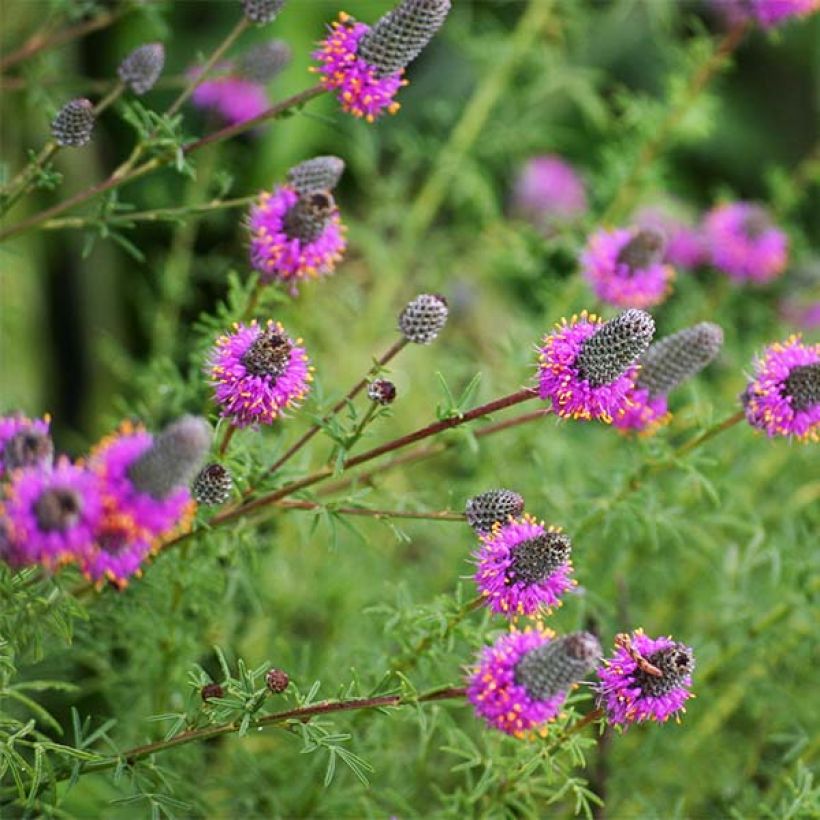



Flowering
Foliage
Plant habit
Botanical data
Dalea
purpurea
Stephanie
Fabaceae
Purple Prairie Clover
Cultivar or hybrid
Other Perennials A to Z
Planting and care
The cultivation of 'Stephanie' Dalea purpurea does not present any particular difficulty, as this plant tolerates a wide diversity of soils and climates. However, its strong taproot does not appreciate transplanting; therefore, its location should be carefully chosen, ideally in full sunlight, to allow the plant to establish itself and avoid further disturbance.
In the first year of cultivation, the plant may appear to be vegetating, which is normal as its root system spreads deeply into the soil. Add a small handful of phosphate fertilizer (a root stimulant) that you will mix with the soil at the time of planting. Add 1/3 sand and 1/3 gravel to heavy soil to ensure good drainage. Water moderately in the first year. In the second year, the plant will be established, requiring no special care, and will be able to flower abundantly for many years!
Planting period
Intended location
Care
- , onOrder confirmed
Reply from on Promesse de fleurs
Spring flowering perennials
Haven't found what you were looking for?
Hardiness is the lowest winter temperature a plant can endure without suffering serious damage or even dying. However, hardiness is affected by location (a sheltered area, such as a patio), protection (winter cover) and soil type (hardiness is improved by well-drained soil).

Photo Sharing Terms & Conditions
In order to encourage gardeners to interact and share their experiences, Promesse de fleurs offers various media enabling content to be uploaded onto its Site - in particular via the ‘Photo sharing’ module.
The User agrees to refrain from:
- Posting any content that is illegal, prejudicial, insulting, racist, inciteful to hatred, revisionist, contrary to public decency, that infringes on privacy or on the privacy rights of third parties, in particular the publicity rights of persons and goods, intellectual property rights, or the right to privacy.
- Submitting content on behalf of a third party;
- Impersonate the identity of a third party and/or publish any personal information about a third party;
In general, the User undertakes to refrain from any unethical behaviour.
All Content (in particular text, comments, files, images, photos, videos, creative works, etc.), which may be subject to property or intellectual property rights, image or other private rights, shall remain the property of the User, subject to the limited rights granted by the terms of the licence granted by Promesse de fleurs as stated below. Users are at liberty to publish or not to publish such Content on the Site, notably via the ‘Photo Sharing’ facility, and accept that this Content shall be made public and freely accessible, notably on the Internet.
Users further acknowledge, undertake to have ,and guarantee that they hold all necessary rights and permissions to publish such material on the Site, in particular with regard to the legislation in force pertaining to any privacy, property, intellectual property, image, or contractual rights, or rights of any other nature. By publishing such Content on the Site, Users acknowledge accepting full liability as publishers of the Content within the meaning of the law, and grant Promesse de fleurs, free of charge, an inclusive, worldwide licence for the said Content for the entire duration of its publication, including all reproduction, representation, up/downloading, displaying, performing, transmission, and storage rights.
Users also grant permission for their name to be linked to the Content and accept that this link may not always be made available.
By engaging in posting material, Users consent to their Content becoming automatically accessible on the Internet, in particular on other sites and/or blogs and/or web pages of the Promesse de fleurs site, including in particular social pages and the Promesse de fleurs catalogue.
Users may secure the removal of entrusted content free of charge by issuing a simple request via our contact form.
The flowering period indicated on our website applies to countries and regions located in USDA zone 8 (France, the United Kingdom, Ireland, the Netherlands, etc.)
It will vary according to where you live:
- In zones 9 to 10 (Italy, Spain, Greece, etc.), flowering will occur about 2 to 4 weeks earlier.
- In zones 6 to 7 (Germany, Poland, Slovenia, and lower mountainous regions), flowering will be delayed by 2 to 3 weeks.
- In zone 5 (Central Europe, Scandinavia), blooming will be delayed by 3 to 5 weeks.
In temperate climates, pruning of spring-flowering shrubs (forsythia, spireas, etc.) should be done just after flowering.
Pruning of summer-flowering shrubs (Indian Lilac, Perovskia, etc.) can be done in winter or spring.
In cold regions as well as with frost-sensitive plants, avoid pruning too early when severe frosts may still occur.
The planting period indicated on our website applies to countries and regions located in USDA zone 8 (France, United Kingdom, Ireland, Netherlands).
It will vary according to where you live:
- In Mediterranean zones (Marseille, Madrid, Milan, etc.), autumn and winter are the best planting periods.
- In continental zones (Strasbourg, Munich, Vienna, etc.), delay planting by 2 to 3 weeks in spring and bring it forward by 2 to 4 weeks in autumn.
- In mountainous regions (the Alps, Pyrenees, Carpathians, etc.), it is best to plant in late spring (May-June) or late summer (August-September).
The harvesting period indicated on our website applies to countries and regions in USDA zone 8 (France, England, Ireland, the Netherlands).
In colder areas (Scandinavia, Poland, Austria...) fruit and vegetable harvests are likely to be delayed by 3-4 weeks.
In warmer areas (Italy, Spain, Greece, etc.), harvesting will probably take place earlier, depending on weather conditions.
The sowing periods indicated on our website apply to countries and regions within USDA Zone 8 (France, UK, Ireland, Netherlands).
In colder areas (Scandinavia, Poland, Austria...), delay any outdoor sowing by 3-4 weeks, or sow under glass.
In warmer climes (Italy, Spain, Greece, etc.), bring outdoor sowing forward by a few weeks.


